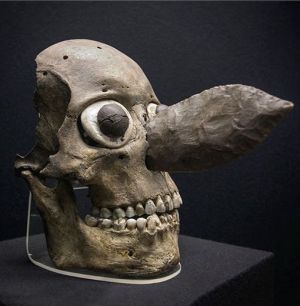Mexico City - A rack longer than a basketball court bearing thousands of skulls has been found beneath Mexico City.
The rack, which towered 5m high - more than twice the height of Kiwi NBA star Steven Adams - was located near two massive towers of skulls belonging to human sacrifices and victims of war, including women and children, that were first discovered in 2015.
The skull racks, known as tzompantli, shocked even the brutal Spanish conquistadors when they arrived in the 16th century. They tore the tzompantli down, paved over the ruins of Tenochtitlan, and built what would become Mexico City.
The terrifying discovery was made thanks to a Mexican law that states whenever someone wants to do a major construction project in downtown Mexico City, archaeologists get to excavate the site first.
Until recently, many thought the tzompantli were a myth created by the conquistadors to demonize the Mexica people of the region, according to last week's report in a Science journal. But the discovery in 2015 changed all that.
 |
Further digging uncovered holes where the fence posts for the rack would have sat. The team soon realized they'd uncovered part of the Huey Tzompantli, one of the biggest tzompantli of all.
Bio-archaeologist Vera Tiesler said the Mexica people took human sacrifice "to an extreme". They did it to appease the gods, fearing the sun wouldn't rise if they didn't, and those sacrificed would be honored in the afterlife.
"All premodern societies make some kind of offering, and in many societies - if not all - the most valuable sacrifice is human life."
The Mexica were the most powerful faction in the Aztec Empire.
"The more powerful a state was, the more victims it could dedicate," said bio-archaeologist Ximena Chávez Balderas.
Three-quarters of the skulls excavated so far belonged to men, 20 percent to women and 5 percent children. Most appeared to be in good health at the time they were sacrificed.
Many had been turned into creepy masks.
Original article

